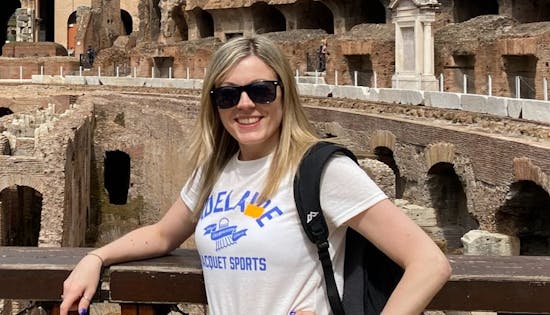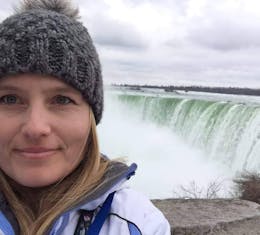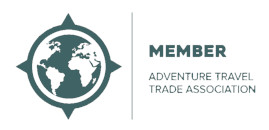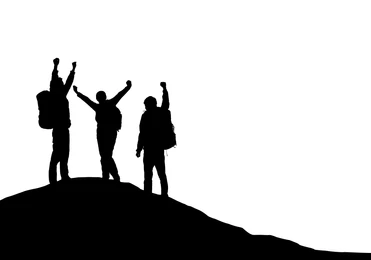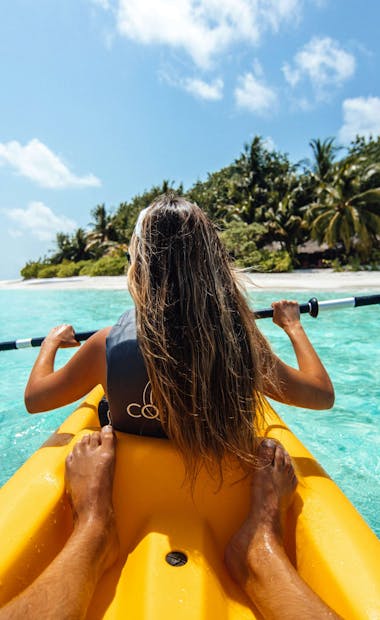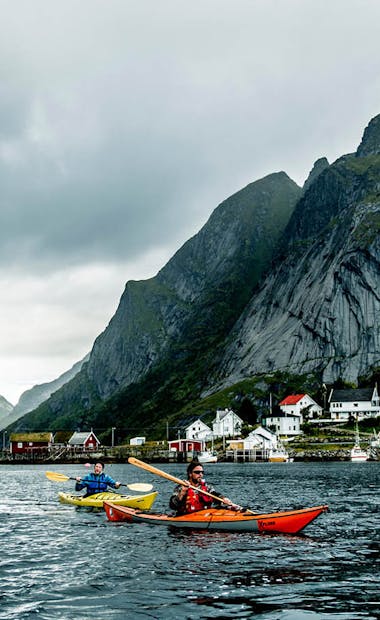
Norway Tours
Land of glaciers, fjords with charming towns and unique wildlife
Popular tours
- Save10%
 View Tour
View TourNorway Fjord Trekking - 7 Days
- Bergen to Bergen
- Age group: 15 - 100
- Max group size: 15
Was:£2,129From£1,907 - Save11%
 View Tour
View TourNorthern Norway Explorer - 9 Days
- Oslo to Tromsø
- Age group: 15 - 99
- Max group size: 12
Was:£3,320From£2,958 - Save18%
 View Tour
View TourOslo to Bergen (4 Star) - 7 Days
- Oslo to Bergen
- Age group: 15 - 99
- Max group size: 16
Was:£2,085From£1,706 - Save18%
 View Tour
View TourOslo to Bergen (3 Star) - 7 Days
- Oslo to Bergen
- Age group: 12 - 99
- Max group size: 16
Was:£1,680From£1,373 - Save18%
 View Tour
View TourTromso Arctic Experience - 6 Days
- Tromsø to Tromsø
- Age group: 5 - 99
- Max group size: 30
Was:£2,215From£1,815 - Save18%
 View Tour
View TourSpectacular Svalbard - 6 Days
- Oslo to Oslo
- Age group: 16 - 99
- Max group size: 20
Was:£3,955From£3,237
Norway Tours
Welcome to the captivating world of Norway, a land of extraordinary beauty and breathtaking wonders that will leave you spellbound. Nestled in the heart of Scandinavia, this enchanting country is a haven for nature enthusiasts, adventure seekers, and culture aficionados alike. Prepare to embark on an unforgettable journey as we unveil the essence of Norway through our remarkable Norway tours and extraordinary Norway holidays.
Picture yourself standing atop towering fjords, gazing out at the awe-inspiring landscapes that have captivated artists and explorers for centuries. Norway's fjords, including the renowned Geirangerfjord and Nærøyfjord, offer a surreal experience of soaring cliffs, cascading waterfalls, and crystal-clear waters. These majestic natural wonders provide the perfect backdrop for hiking, kayaking, or simply indulging in a moment of tranquility.
As you traverse the diverse Norwegian terrain, you will discover the magnificent Norwegian coastline. Stretching over 25,000 kilometers, it is adorned with charming fishing villages, white-sand beaches, and remote islands waiting to be explored. The Lofoten Islands, with their rugged beauty and dramatic peaks, are a photographer's paradise and a hiker's dream.
For those seeking a touch of Arctic wonder, a visit to Norway's Svalbard archipelago is an absolute must. Witness the ethereal Northern Lights dance across the night sky, explore ice caves, and encounter polar bears in their natural habitat. This extraordinary Arctic wilderness will leave you in awe of nature's grandeur.
Norway's vibrant cities also offer a delightful fusion of tradition and modernity. In Oslo, the capital city, you can immerse yourself in the country's rich history at the Viking Ship Museum or explore contemporary art at the renowned Astrup Fearnley Museum. Bergen, known as the gateway to the fjords, entices visitors with its colorful wooden houses, vibrant fish markets, and a funicular ride to the top of Mount Fløyen for panoramic views.
As you venture further north, the magical city of Tromsø invites you to experience the land of the midnight sun and the bewitching Arctic twilight. With its lively atmosphere and fascinating Sami culture, this vibrant city promises an unforgettable encounter with the Arctic spirit.
Whether you're seeking thrilling outdoor adventures, serene natural landscapes, or a glimpse into rich cultural heritage, Norway has something for everyone. From the spectacular fjords to the awe-inspiring Northern Lights, this country of contrasts will leave an indelible mark on your soul.
Embark on our remarkable Norway tours and let our expert guides unveil the hidden gems of this Nordic gem. With meticulously crafted itineraries, personalized experiences, and exceptional service, we ensure that your Norway holidays will be filled with moments of wonder and discovery.
Don't miss the chance to immerse yourself in the breathtaking beauty of Norway. Let us take you on an extraordinary journey through this land of myths and legends, where nature reigns supreme and unforgettable memories are waiting to be made. Book your Norway tour today and let the magic of this Nordic wonderland capture your heart.
When is the best time to visit Norway?
The best time to visit Norway largely depends on your personal preferences and the specific experiences you seek. Norway offers distinct seasons, each with its own unique charm. Here's a breakdown of the different seasons and what they have to offer:
Summer (June to August): Summer is the most popular time to visit Norway, especially for outdoor activities and exploring the fjords. The weather is relatively mild, with long daylight hours and temperatures ranging from 15°C to 25°C (59°F to 77°F) in most regions. This is an ideal time for hiking, fishing, kayaking, and enjoying the vibrant festivals and events that take place during this season.
Fall (September to November): Fall in Norway is a season of breathtaking beauty as the foliage transforms into a vivid display of red, orange, and gold hues. The weather gradually becomes cooler, and you may experience some rain. This is a great time for hiking, wildlife spotting, and exploring the charming cities and towns at a slower pace. It's also the season for mushroom foraging and enjoying local harvest festivals.
Winter (December to February): Winter is a magical time to visit Norway, especially for winter sports enthusiasts and those seeking the enchantment of the Northern Lights. The country transforms into a winter wonderland, with snowy landscapes and opportunities for skiing, snowboarding, dog sledding, and snowshoeing. The northern parts of Norway, such as Tromsø and Svalbard, offer the best chances to witness the mesmerizing Aurora Borealis.
Spring (March to May): Spring brings a sense of renewal to Norway as the snow starts to melt, and nature awakens from its winter slumber. The days become longer, and temperatures begin to rise, although it can still be chilly. This is a great time to witness the blossoming of wildflowers, spot migrating birds, and enjoy the tranquility of the fjords before the peak tourist season begins.
It's important to note that weather patterns can vary throughout the country, so it's always advisable to check the specific regions you plan to visit. Additionally, popular tourist destinations can be more crowded during the summer months, while the winter season may offer a more serene and secluded experience.
Ultimately, the best time to visit Norway depends on your interests, whether you long for summer adventures, winter magic, or the colorful transition of seasons. Each season has its own allure, and Norway's natural beauty shines year-round.
Will I need a visa to travel to Norway?
Whether you will need a visa to travel to Norway depends on your nationality and the purpose and duration of your visit. Norway is a member of the Schengen Area, which is a group of European countries that have abolished internal border controls, allowing for free movement of people within the area.
If you are a citizen of a country that is a member of the European Union (EU) or the European Free Trade Association (EFTA), such as Iceland, Liechtenstein, Switzerland, or a Schengen Agreement signatory country, you do not need a visa to enter Norway. You can travel to Norway using a valid passport or national ID card and stay for up to 90 days within a 180-day period.
If you are a citizen of a country that is not part of the EU, EFTA, or a Schengen Agreement signatory country, you may need to apply for a Schengen visa before traveling to Norway. The visa allows you to enter and stay in the Schengen Area, including Norway, for a specific duration and purpose, such as tourism, business, or visiting family or friends. The requirements and application process for a Schengen visa vary depending on your country of residence, so it is advisable to consult with the nearest Norwegian embassy or consulate for accurate and up-to-date information.
It's essential to check the visa requirements well in advance of your planned travel dates to ensure you have the necessary documentation in order. Additionally, make sure your passport is valid for at least six months beyond your intended departure date from Norway.
Please note that visa regulations can change, so it's always recommended to verify the current visa requirements for your specific citizenship and travel circumstances before planning your trip to Norway.
What are the must see destinations in Norway?
Norway boasts a plethora of must-see destinations, each offering its own unique charm and natural wonders. Here are some of the top attractions that should be on your itinerary when visiting Norway:
Oslo: The capital city of Norway, Oslo, is a vibrant and cultural hub. Explore the iconic Viking Ship Museum, which houses remarkably preserved Viking ships, and visit the renowned Vigeland Park, home to over 200 striking sculptures by Gustav Vigeland. Don't miss the contemporary architecture of the Oslo Opera House or the fascinating exhibits at the Munch Museum, dedicated to the works of renowned painter Edvard Munch.
Bergen: Known as the gateway to the fjords, Bergen is a picturesque city surrounded by stunning landscapes. Explore the UNESCO-listed Bryggen Wharf, a row of colorful wooden buildings, and visit the Hanseatic Museum to learn about Bergen's rich maritime history. Take a funicular to the top of Mount Fløyen for breathtaking panoramic views, and indulge in the freshest seafood at the bustling Fish Market.
Geirangerfjord: One of Norway's most famous fjords, the Geirangerfjord, captivates visitors with its awe-inspiring beauty. Surrounded by towering cliffs and cascading waterfalls, it offers unforgettable scenic cruises and opportunities for kayaking and hiking. The Seven Sisters Waterfall and the Eagle's Bend viewpoint are not to be missed.
Tromsø: Located in the Arctic Circle, Tromsø is known as the "Gateway to the Arctic" and offers unique experiences. Visit the striking Arctic Cathedral and explore the Polaria Museum to learn about the region's wildlife and ecosystems. Embark on a thrilling dog sledding adventure or take a snowmobile excursion in search of the Northern Lights.
Lofoten Islands: The Lofoten Islands are a photographer's paradise and a nature lover's dream. This archipelago is renowned for its dramatic mountain peaks, pristine beaches, and traditional fishing villages. Explore the charming towns of Reine and Henningsvær, go hiking in the mountains, and experience the midnight sun during the summer months.
Svalbard: For an Arctic expedition like no other, head to Svalbard, a remote archipelago between mainland Norway and the North Pole. Discover the untouched wilderness, witness polar bears in their natural habitat, and marvel at the icy landscapes. Take a boat trip to see massive glaciers and immerse yourself in the unique Arctic environment.
Preikestolen (Pulpit Rock): A true natural wonder, Preikestolen is a towering cliff rising 604 meters above the Lysefjord. Hiking to the top rewards you with awe-inspiring views of the fjord below. The hike is moderately challenging but well worth the effort for the incredible panoramic vistas.
These are just a few of the countless remarkable destinations Norway has to offer. Whether you're captivated by the majestic fjords, enchanted by the Northern Lights, or eager to explore the Arctic wilderness, Norway's diverse and awe-inspiring attractions will leave you with memories to last a lifetime.
What is the local currency in Norway, and can I use credit cards?
The local currency in Norway is the Norwegian Krone (NOK). It is advisable to have some Norwegian Krone with you for small purchases or places that may not accept credit cards. Currency exchange services are available at airports, banks, and exchange offices throughout the country.
Credit cards are widely accepted in Norway, and you can use them for most transactions, including hotels, restaurants, shops, and attractions. International credit cards such as Visa and Mastercard are commonly used. Some establishments may also accept other major credit cards, but it's always a good idea to carry a backup card or have some cash on hand, especially when traveling to remote areas or smaller establishments.
Norway is known for its advanced payment systems, and contactless payments via mobile apps or smart devices are popular and widely accepted. Services like Apple Pay, Google Pay, and various banking apps are commonly used for payments.
It's important to notify your credit card company or bank before traveling to Norway to ensure that your cards will work abroad and to avoid any potential issues with international transactions.
ATMs (automated teller machines) are readily available in cities and towns throughout Norway, allowing you to withdraw Norwegian Krone using your debit or credit card. Keep in mind that there may be ATM fees or currency conversion charges, so it's a good idea to check with your bank regarding any associated costs.
Overall, Norway is a modern and well-connected country when it comes to payment options, and you should have no trouble using credit cards or accessing local currency during your visit.
Is Norway a good family holiday destination?
Absolutely! Norway is an excellent family holiday destination, offering a wide range of activities and attractions that cater to travelers of all ages. Here are some reasons why Norway is perfect for a family vacation:
Safe and Family-Friendly Environment: Norway is known for its high safety standards and family-friendly atmosphere. Whether you're exploring cities, venturing into nature, or enjoying outdoor activities, you can feel confident knowing that Norway prioritizes the well-being of its residents and visitors.
Remarkable Natural Beauty: Norway's stunning landscapes provide a fantastic backdrop for family adventures. From the majestic fjords to the snow-capped mountains and pristine forests, there are endless opportunities for hiking, biking, camping, and wildlife spotting. Exploring the great outdoors together will create lasting memories for your family.
Exciting Winter Activities: If you're visiting during the winter months, Norway offers a plethora of winter activities that the whole family can enjoy. From thrilling sled rides and snowball fights to ice fishing and building snowmen, there's no shortage of winter fun. You can also try skiing, snowboarding, or taking a husky sled ride, providing unique and memorable experiences.
Educational Opportunities: Norway provides numerous educational experiences for children. Museums like the Viking Ship Museum in Oslo and the Polar Museum in Tromsø offer interactive exhibits and fascinating insights into history, culture, and wildlife. The country's emphasis on sustainability and environmental conservation can also provide valuable lessons for young minds.
Wildlife Encounters: Norway's diverse ecosystems are home to a variety of wildlife species. Kids will delight in the chance to spot reindeer, moose, seals, and seabirds. In certain areas, you may even have the opportunity to see whales or encounter the famous puffins.
Family-Friendly Attractions: Norway features several attractions designed specifically for families. Theme parks such as TusenFryd near Oslo and Kongeparken in Stavanger offer thrilling rides and entertainment for all ages. Additionally, zoos, aquariums, and wildlife parks throughout the country provide hands-on experiences with animals.
Cultural Experiences: Norway's rich cultural heritage provides ample opportunities for families to learn and engage. Visit traditional stave churches, explore historical sites, and participate in folk festivals to immerse yourselves in Norwegian traditions. The Sami culture in the northern regions offers a chance to learn about indigenous traditions and reindeer herding.
With its emphasis on nature, safety, and engaging activities, Norway offers an ideal setting for a memorable and enriching family holiday. It's a destination where you can bond as a family, create lasting memories, and instill a sense of wonder and appreciation for the world around us.
Is Norway a good destination for solo travellers?
Absolutely! Norway is a fantastic destination for solo travelers seeking adventure, natural beauty, and unique cultural experiences. Here are some reasons why Norway is an excellent choice for solo exploration:
Safety: Norway consistently ranks as one of the safest countries in the world, making it an ideal destination for solo travelers. Whether you're exploring cities or venturing into the wilderness, you can feel secure and confident in your surroundings.
Stunning Landscapes: Norway's landscapes are nothing short of breathtaking, and exploring them solo allows you to fully immerse yourself in the beauty and tranquility of nature. From the fjords to the mountains, forests to the Arctic wilderness, Norway offers awe-inspiring scenery that is perfect for solo adventures and self-reflection.
Outdoor Adventures: Norway is a playground for outdoor enthusiasts, and solo travelers can fully embrace the wide array of adventure activities available. Whether it's hiking through national parks, kayaking along fjords, cycling scenic routes, or skiing in the winter, you can challenge yourself and create unforgettable experiences in Norway's great outdoors.
Northern Lights: Witnessing the mesmerizing Northern Lights (Aurora Borealis) is a bucket-list experience, and Norway's Arctic regions provide optimal viewing opportunities. Solo travelers have the flexibility to choose their own Northern Lights hunting locations and chase the elusive natural phenomenon at their own pace.
Cultural Immersion: Norway's rich cultural heritage and friendly locals make it an inviting destination for solo travelers. Engage in conversations with locals, visit museums and historical sites, and partake in traditional festivals to gain insights into Norwegian culture and customs.
Well-developed Infrastructure: Norway boasts excellent infrastructure, including reliable transportation networks, well-marked hiking trails, and a high standard of accommodation options. This makes it easier for solo travelers to navigate and explore the country independently.
Solo-friendly Activities: Norway offers a range of activities that are well-suited for solo travelers. Join guided tours, meet fellow travelers on organized excursions, or embark on self-guided adventures tailored to your preferences. From wildlife safaris to cultural tours, there are numerous opportunities to connect with like-minded individuals along the way.
Whether you seek solitude in nature or wish to engage with locals and fellow travelers, Norway provides a welcoming environment for solo exploration. It's a destination that encourages personal growth, self-discovery, and unforgettable experiences in one of the world's most captivating settings.
Is Norway a safe destination?
Yes, Norway is widely considered a safe destination for travelers. It consistently ranks high in global safety indexes and is known for its low crime rates and well-maintained infrastructure. Here are some key factors that contribute to Norway's reputation as a safe country:
Low Crime Rates: Norway has a low crime rate compared to many other countries. Violent crime and petty theft are relatively uncommon, especially in tourist areas. However, as with any destination, it's still important to take basic precautions to safeguard your belongings and personal safety.
Political Stability: Norway is known for its political stability and well-functioning democratic institutions. This provides a secure environment for residents and visitors alike.
Safe Cities: Norwegian cities, including Oslo, Bergen, Trondheim, and Stavanger, are generally safe to explore. Public spaces, public transportation, and tourist areas are well-maintained and monitored, adding to the overall sense of security.
Natural Hazards: While Norway is generally safe, it's important to be aware of potential natural hazards in certain regions. These may include avalanches in mountainous areas during the winter, unpredictable weather conditions, and the risk of falling rocks or landslides in some coastal or fjord areas. Pay attention to local advice and follow safety guidelines, particularly when engaging in outdoor activities.
Health and Medical Services: Norway has a high standard of healthcare, with modern medical facilities and services available throughout the country. Travelers can access quality healthcare if needed.
Road Safety: Norwegian roads are generally well-maintained and safe to drive on. However, be cautious when driving in remote areas, as some roads can be narrow and winding. Additionally, pay attention to seasonal road conditions, such as snow and ice during the winter months.
While Norway is considered safe, it's always advisable to use common sense and take precautions that you would in any foreign country. Stay alert, secure your belongings, and be aware of your surroundings. It's also recommended to have travel insurance to cover any unforeseen circumstances.
Overall, Norway's reputation for safety, political stability, and well-developed infrastructure makes it a secure destination for travelers to explore and enjoy its stunning natural landscapes, cultural heritage, and warm hospitality.
Will I require any vaccinations to travel to Norway?
No specific vaccinations are required for travelers visiting Norway. The country does not have any widespread infectious diseases that necessitate mandatory vaccinations for entry. However, it is always advisable to ensure that your routine vaccinations are up to date before traveling to any destination.
It is also recommended to consult with a healthcare professional or travel health clinic well in advance of your trip to discuss any additional vaccinations or preventive measures that may be recommended based on your individual health status and travel plans. They can provide personalized advice based on your specific needs and the activities you plan to engage in during your visit to Norway.
Additionally, it is important to note that health and safety guidelines can change, so it is advisable to check the latest information from reputable sources such as the World Health Organization (WHO) or the Centers for Disease Control and Prevention (CDC) before your trip. They can provide up-to-date information regarding any specific health concerns or vaccination recommendations for travelers to Norway.
Remember to also take standard precautions to maintain good hygiene during your trip, such as practicing regular handwashing, avoiding close contact with sick individuals, and following any local health guidelines or recommendations.
How does the rooming work on tours?
Small group tours in Norway typically involve a set itinerary where you travel with a group of fellow travellers and a tour leader/guide. Accommodation arrangements vary depending on the specific tour you choose. Here are some common aspects of rooming arrangements on small group tours:
Shared Rooms: In order to promote camaraderie and facilitate interaction among group members, most tours arrange shared accommodation. This means you will be paired with another member of the same gender from the group to share a room. Roommates may sometimes change periodically throughout the tour.
Single Supplement: If you prefer to have your own room and privacy, you may have the option to pay a single supplement fee. This additional fee allows you to have your own room for the duration of the tour. However, please note that single supplements can vary in cost and availability.
Roommate Matching: Tour operators usually offer roommate matching services, where they try to pair you with a suitable roommate based on your preferences, such as age range. This can help ensure compatibility and a more enjoyable experience for all participants.
Rooming Preferences: When booking your small group tour, it's important to communicate your rooming preferences to the tour operator. If you have specific requirements or preferences, such as sharing with a friend or a specific roommate request, it's advisable to inform the tour operator during the booking process.
It's important to carefully read the tour details and inclusions provided by the tour operator to understand their specific rooming policies. If having your own room is a priority, make sure to inquire about the availability of single supplements and any associated costs before booking your tour.
Keep in mind that while sharing a room with a fellow traveller can be a great way to meet new people and build connections, having your own room provides more privacy and flexibility. Consider your preferences and the dynamics of the tour when deciding whether to opt for a shared room or pay for a single supplement.
Remember to communicate your needs and preferences clearly with the tour operator during the booking process to ensure a comfortable and enjoyable accommodation experience on your small group tour in Norway.
What is the food like in Norway?
Norwegian cuisine is diverse and influenced by its coastal geography, abundant seafood, and traditional farming practices. Here are some highlights of Norwegian food:
Seafood: Given its extensive coastline, seafood plays a prominent role in Norwegian cuisine. Fresh and flavorful fish such as salmon, cod, herring, and trout are commonly enjoyed. Traditional dishes like lutefisk (dried fish soaked in lye) and rakfisk (fermented fish) are also part of Norwegian culinary heritage.
Smoked and Cured Delicacies: Norway is renowned for its smoked and cured products, including smoked salmon, gravlax (cured salmon), rakfisk, and smoked mackerel. These delicacies are often served with mustard sauce, dill, or on traditional flatbread called lefse.
Lamb and Game: Norwegian lamb and game, such as reindeer, elk, and venison, are prized meats. They are often used in hearty stews, sausages, or served as steaks. Reindeer meat, in particular, is a delicacy often found in northern regions of Norway.
Traditional Stews and Soups: Traditional Norwegian stews and soups are popular comfort foods. Fårikål, a lamb and cabbage stew, is considered the national dish. Other favorites include raspeballer (potato dumplings) served with bacon, sausage, and lingonberry jam, as well as fish soups like fiskesuppe and bacalao (salted cod stew).
Rømmegrøt: Rømmegrøt is a traditional Norwegian porridge made from sour cream, butter, and flour. It has a creamy texture and is often served with sugar, cinnamon, and butter.
Berries and Foraged Ingredients: Norway's pristine nature offers a variety of berries, including lingonberries, cloudberries, and bilberries. These berries are used in desserts, jams, and sauces. Foraged ingredients like mushrooms and wild herbs also make their way into Norwegian cuisine, adding unique flavors to dishes.
Bread and Pastries: Bread is a staple in Norwegian cuisine, with a variety of traditional bread types available. Norwegian pastries such as skillingsboller (cinnamon buns), krumkake (thin waffle-like cookies), and solboller (sweet buns filled with cream and jam) are popular treats.
Brunost: Brunost, or brown cheese, is a distinct Norwegian cheese made from caramelized whey. It has a sweet and slightly tangy flavor and is often eaten on bread or waffles.
Norwegian food reflects a balance of traditional, rustic flavors and modern influences. When visiting Norway, be sure to explore local markets, seafood restaurants, and traditional eateries to savor the country's culinary delights.
Can I drink the tap water in Norway?
Yes, tap water in Norway is generally safe to drink. The water quality in Norway is of high standards, and tap water undergoes rigorous testing to ensure its safety for consumption. The water supply is well-maintained and regularly monitored by local authorities.
In cities, towns, and most rural areas, tap water is considered safe and potable. You can confidently drink tap water from the faucets in hotels, restaurants, and private accommodations. Many Norwegians themselves prefer tap water over bottled water due to its quality and environmental sustainability.
However, it's worth noting that in some remote or rural areas, particularly those served by private wells or small water systems, the water quality might vary. In such cases, it's advisable to inquire locally about the quality of tap water and follow any recommendations or precautions given by the residents or accommodation providers.
If you prefer bottled water, it is widely available for purchase in supermarkets, convenience stores, and other retail outlets throughout the country. However, keep in mind that opting for tap water helps reduce plastic waste and is an environmentally friendly choice.
Overall, tap water in Norway is safe for drinking, and you can enjoy the convenience and quality of the local water supply during your visit.
Are there any cultural norms in Norway I should follow?
Yes, while visiting Norway, it is helpful to be aware of and respect the cultural norms and customs of the country. Here are some key cultural norms in Norway:
Punctuality: Norwegians value punctuality and appreciate it when others are on time for meetings, appointments, or social gatherings. It's considered polite to arrive at the designated time or inform the host if you anticipate being delayed.
Personal Space and Privacy: Norwegians generally value their personal space and privacy. It is customary to maintain a respectful distance during conversations and interactions. Avoid intrusive personal questions unless the topic is brought up willingly by your Norwegian counterparts.
Equality and Informality: Norway is known for its egalitarian society, and social equality is highly valued. Addressing people by their first names, regardless of their age or position, is common practice. Norwegians tend to have a more informal and egalitarian approach to communication and interactions.
Nature and Outdoor Respect: Norwegians have a deep appreciation for their natural environment, and it is important to respect the pristine landscapes. Take care to follow established trails, avoid littering, and adhere to any guidelines or restrictions in protected areas. Show consideration for wildlife and adhere to local regulations when engaging in outdoor activities.
Sustainability and Environmental Consciousness: Norwegians have a strong commitment to environmental sustainability. Recycling is widely practiced, and it is appreciated when visitors follow suit. Consider using reusable items, minimizing waste, and being mindful of energy consumption during your stay.
Tipping: While service charges are often included in bills, it is customary to round up the bill or leave a small tip as a gesture of appreciation for good service. However, tipping is not obligatory, and it's ultimately at your discretion.
Queuing and Respect for Others: Norwegians value orderly queues and expect individuals to wait their turn in public places, such as transportation, ticket counters, or shops. Respecting others' personal space and being considerate in public settings is highly appreciated.
Remember that cultural norms can vary among individuals, and Norwegians are generally understanding of cultural differences. If in doubt about a specific situation, observing the locals and following their lead is a good approach.
By being respectful, open-minded, and embracing the local customs, you can have a more enriching and enjoyable experience while visiting Norway.
What should I pack for a trip to Norway?
When packing for a trip to Norway, it's important to consider the season, weather conditions, and the activities you plan to engage in. Here are some essential items to pack for a trip to Norway:
Clothing:
- Layered clothing: Norway's weather can be changeable, so it's best to pack lightweight, breathable layers that you can easily add or remove as needed.
- Waterproof and windproof jacket: A waterproof and windproof jacket is essential, particularly if you plan to spend time outdoors or visit coastal areas.
- Warm sweaters or fleeces: Pack warm sweaters or fleeces for cooler temperatures, especially if you're traveling in the colder months or visiting higher elevations.
- Comfortable walking shoes: Norway offers stunning landscapes and opportunities for hiking, so pack comfortable, sturdy walking shoes or hiking boots.
- Waterproof and insulated footwear: If you plan to visit during the winter or engage in winter activities, such as snow hiking or skiing, waterproof and insulated footwear is crucial to keep your feet warm and dry.
- Hat, gloves, and scarf: These items are essential for protecting yourself from cold temperatures, particularly in the winter months.
- Swimwear: If you're visiting during the summer or plan to visit the coastal areas or fjords, pack swimwear for swimming or enjoying hot tubs and saunas.
Outdoor Gear:
- Daypack or backpack: A daypack or backpack is handy for carrying essentials, water, snacks, and extra layers during outdoor activities.
- Hiking gear: If you plan to hike, pack appropriate gear such as a sturdy backpack, water bottle, hiking poles, and a good pair of hiking socks.
- Outdoor accessories: Consider packing a hat, sunglasses, sunscreen, insect repellent, and a reusable water bottle.
Travel Essentials:
- Travel adapters: Norway uses the Europlug (Type C and F) electrical outlets, so make sure to pack a travel adapter if your devices have different plugs.
- Travel documents: Don't forget to bring your passport, travel insurance information, and any necessary visas or identification documents.
- Money and cards: Carry some Norwegian currency (Norwegian Krone) for smaller purchases, and also have a credit/debit card for larger expenses. Norway is generally a cashless society, and cards are widely accepted.
- Travel guidebook or maps: A travel guidebook or maps can be helpful for exploring cities, finding attractions, and navigating the countryside.
- Medications and personal care items: Pack any necessary medications, along with personal care items such as toiletries, hand sanitizer, and any specific items you may require.
Other Considerations:
- Camera and accessories: Norway offers incredible natural beauty, so don't forget to bring your camera or smartphone to capture memorable moments.
- Travel lock and money belt: Consider bringing a travel lock for securing your luggage and a money belt to keep your valuables safe.
- Waterproof pouch or dry bags: If you plan to engage in water-based activities or encounter rainy weather, waterproof pouches or dry bags can protect your electronic devices and other valuables.
Remember to check the weather forecast for your specific travel dates and destinations in Norway to help you pack accordingly. It's also a good idea to pack versatile clothing items that can be mixed and matched to suit different weather conditions and activities.
Lastly, pack light and only bring what you need to ensure your comfort and convenience during your trip to Norway.
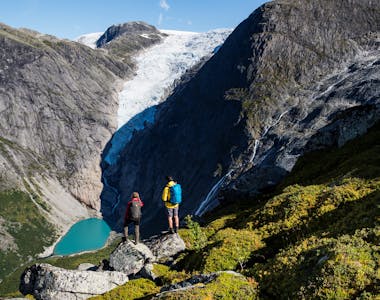
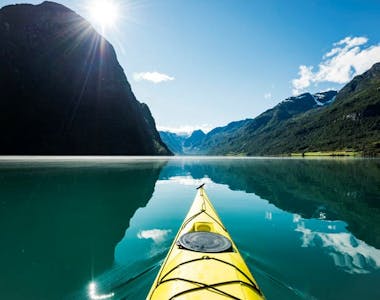
Book With Confidence
Monthly Payments
Spread the costs with no interest or additional fees
Best Price Guarantee
We won't be beaten on price. If you find this adventure at a lower price please get in touch!
Reserve now & pay later
Reserve your adventure today and pay later, free of charge
ATOL protected
Book with confidence
Hold your space today, for free
or book your trip with a deposit and then pay the rest in instalments.
Reserve your flights with us
Add flights to your booking and we'll take care of the rest. You'll get 24/7 support from our team & ATOL protection.
Speak to our experts
Call or email our expert team to find out more and help with ideas and planning.
